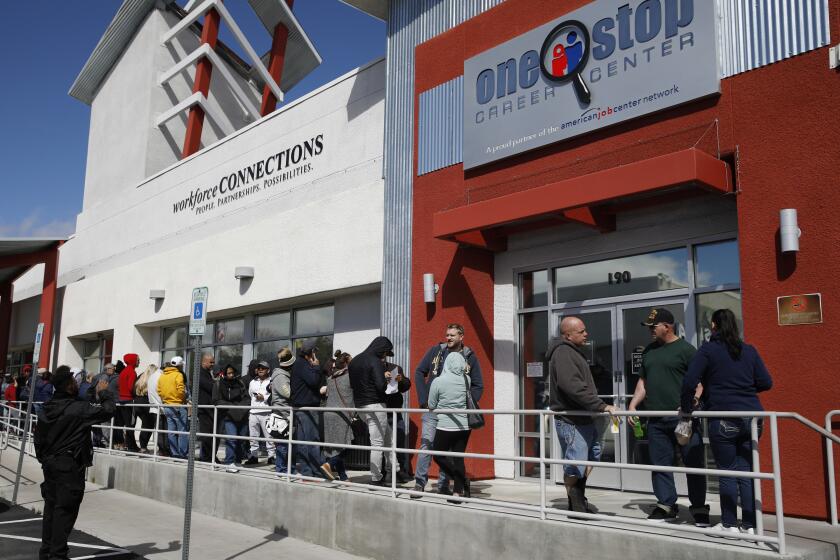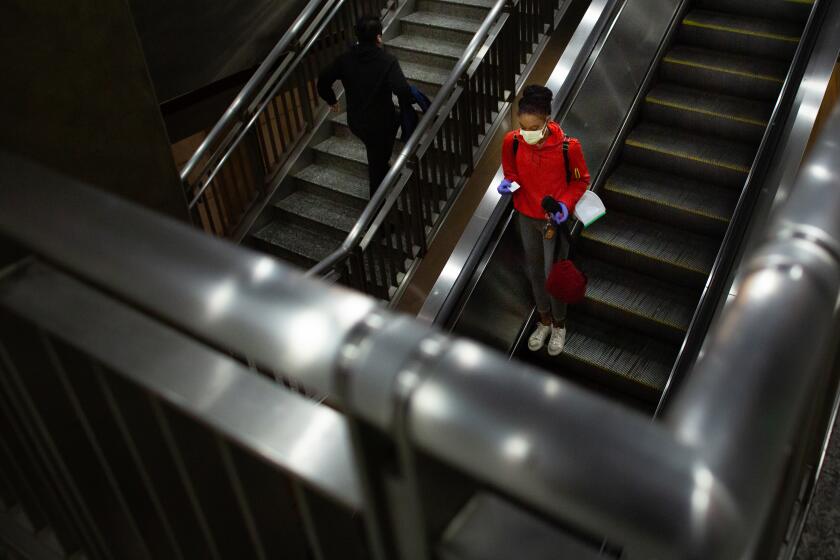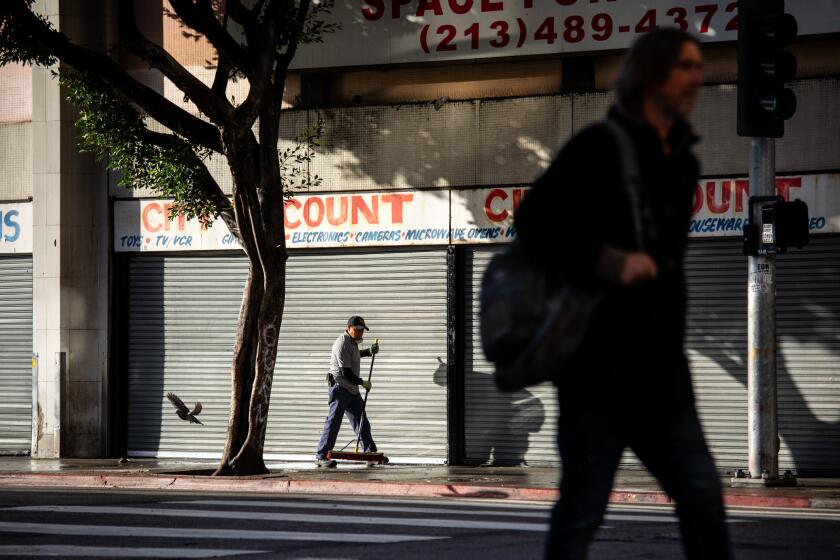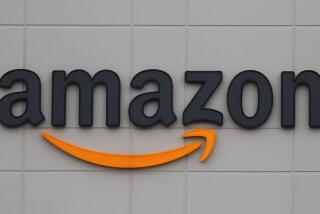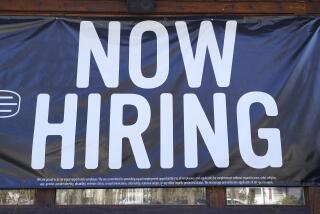Mounting jobless claims point to a 15% unemployment rate for April
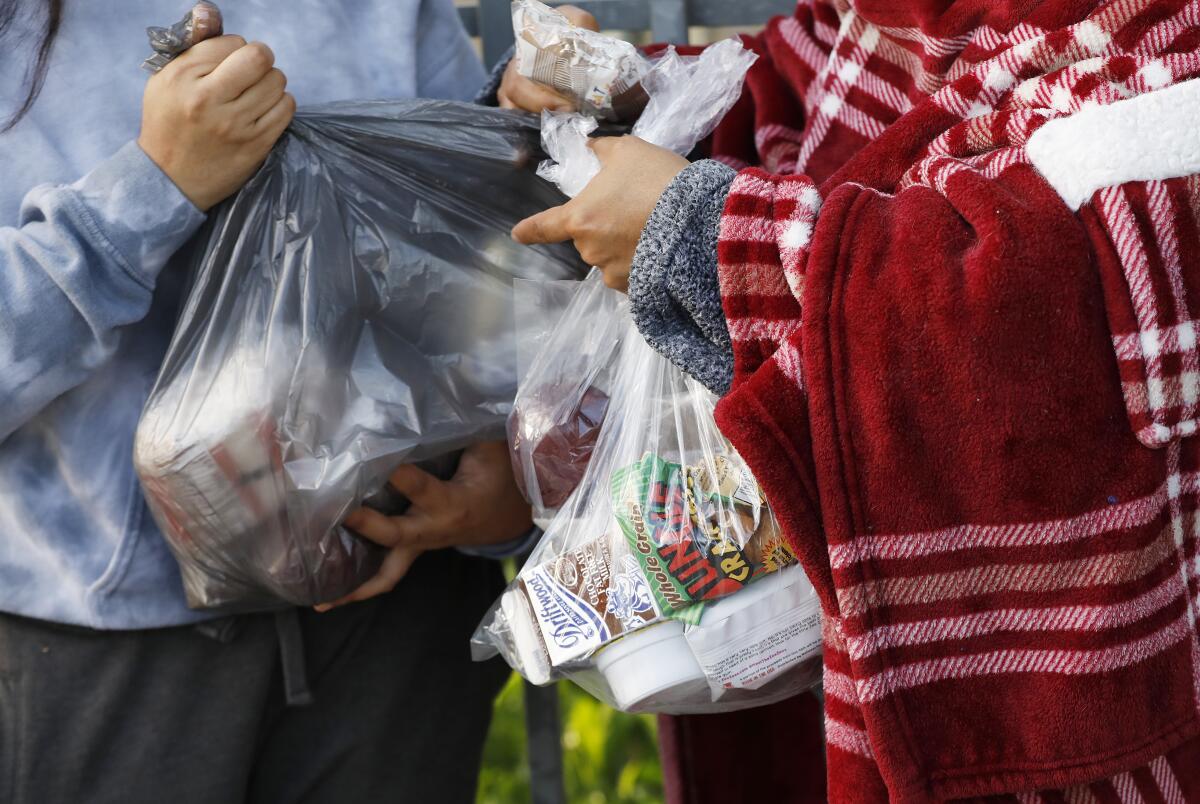
- Share via
WASHINGTON — In the fastest surge of layoffs in U.S. history, nearly 17 million Americans applied for unemployment benefits in the last three weeks because of the coronavirus pandemic, the federal government reported Thursday.
It marked a tsunami-like economic hit not seen since the Great Depression of the 1930s, when 1 in 4 workers were jobless. The figures suggest the U.S. unemployment rate in April will soar to 15% or even higher.
The latest bad news set off renewed pressure from President Trump and other administration officials to relax restrictive social distancing policies to allow businesses to reopen in an effort to speed a rebound in the American economy.
Trump this week returned to previous refrains about not allowing the cure to be worse than the disease. And Treasury Secretary Steven T. Mnuchin said Thursday that the economy could be running again in May.
“Hopefully we’re going to be opening up,” Trump said Thursday. “Very, very, very, very soon, I hope.”
These are some of the unusual new scenes across the Southland during the coronavirus outbreak.
Yet continued high levels of infection, a still-rising death toll and new evidence that the coronavirus is spreading into less-populous parts of the country that previously had few cases all suggested that a quick reopening may not be feasible.
Experts have warned that relaxing restrictions too soon could prolong the pandemic and set off secondary waves of infection. Newly infected carriers could spread the disease back into recovering areas and infect individuals who had escaped the first round.
Such a scenario would end up battering the economy anew, experts warn, perhaps in ways that are harder to control than the government’s current self-induced shutdown.
Instead of early relaxation of lockdowns and other social distancing measures, some economists suggested what’s needed is more and longer-lasting help for those thrown out of work.
“The major takeaway from the labor market data is that Congress and the administration are going to have to provide more aid to a beleaguered domestic labor force that will face a period of mass unemployment,” said Joseph Brusuelas, chief economist at the accounting firm RSM US.
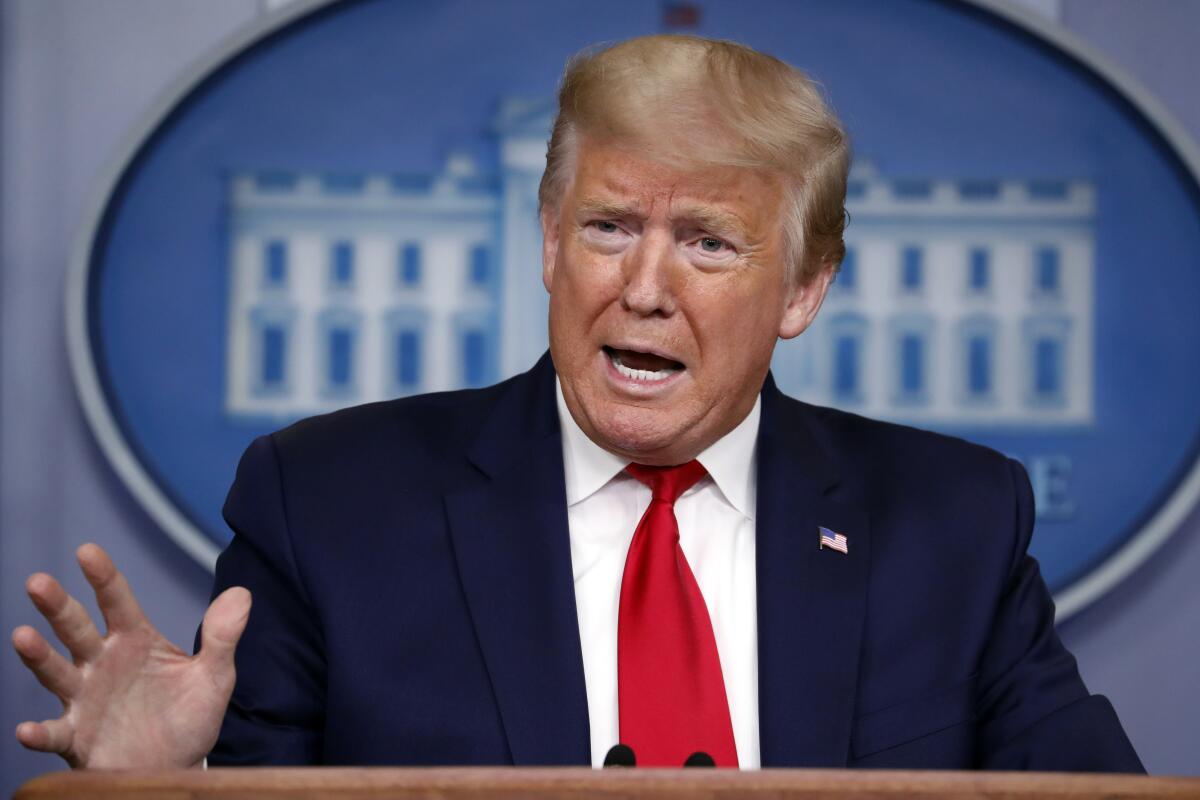
The claims filed in the last three weeks are “a mind-boggling 2,500% increase over the pre-virus period,” economists at the Economic Policy Institute said. “For a benchmark, this is as if the entire adult populations of Michigan, Minnesota, and Wisconsin applied for unemployment insurance in the last three weeks.”
California accounted for a disproportionately large share of jobless claims. More than 925,000 people in the state applied for benefits in the week that ended April 4, bringing to 2.9 million the total filings in the last three weeks.
The Federal Reserve, anticipating the bleak news in the Labor Department’s latest weekly report, announced minutes later that it was creating a new set of programs to provide $2.3 trillion in loans to aid businesses, states and cities.
“We are moving with alarming speed from 50-year lows in unemployment to what will likely be very high, although temporary, levels,” said Fed Chairman Jerome H. Powell, speaking Thursday morning in an online interview with the Brookings Institution.
The central bank has pulled out all the stops to flood the economy with cash to keep credit flowing to prevent a freeze-up in the financial system.
Coronavirus unemployment has hit millions. Here are some resources to help. Also, what to do when your lender won’t give you student loan relief.
But the magnitude of the layoffs suggested that neither the Fed’s interventions nor Congress’ $2.2-trillion relief package approved two weeks ago will be enough.
The Trump administration and Republican lawmakers have pushed to provide an additional $250 billion to the $350-billion small-business lending program that forgives loans to those that retain employees. But the Senate deadlocked on the proposal Thursday as Democrats demanded safeguards for the so-called Paycheck Protection Program. They also wanted to add $150 billion to support state and local governments, and $100 billion for the healthcare system.
The small-business loan program has gotten off to a rocky start as some banks balked at participating and some regulations were not finalized. But “once the loans start getting processed at a faster clip, this initial pot of money is going to be gone,” said Beth Milito, senior executive counsel at the National Federation of Independent Business, a small-business lobbying group.
Even though businesses are starting to plan for reopening, Milito doesn’t see a quick recovery. “I think the thaw-out is going to last longer than we had hoped originally,” she said, noting that her state, Virginia, has a shelter-in-place order until June 10. “And really, June 11, are people going to be comfortable enough to run out and meet at a restaurant? Probably not.”
SynergEyes Inc., a specialty contact lens maker in Carlsbad, is bracing for six months of declining revenue and demand, said Bob Ferrigno, the company’s chief executive. Since sales started falling March 18, he said, the company has cut production from three shifts five days a week to two shifts over three days.
New coronavirus laws provide a litany of benefits to the self-employed, freelancers and workers in the gig economy.
This week the 15-year-old business, with about 100 employees, was approved for a $1.5-million loan under the Paycheck Protection Program. It will allow the company to avoid layoffs and keep paying virtually all of its employees at their regular rate, Ferrigno said.
“We’d be in threat without it,” he said of the 1% interest-rate loan.
On Thursday, Larry Kudlow, director of the National Economic Council, sought to damp expectations that a substantial change was imminent in the administration’s economic-reopening policy.
“The president has been talking to his economic advisors,” Kudlow said. “There’s nothing formal going on…. The president is seeking guidance from everybody, inside and outside of government.”
Besides the continuing spread of the virus, the layoffs will inevitably cause many workers to become disconnected from their employers, even though most layoffs are being labeled temporary.
For one thing, workers in lower-paying service businesses such as restaurants and retail stores may want to stay on unemployment rolls out of concern about personal safety and because of the relatively generous levels of jobless benefits provided in the recent aid legislation.
“Why work and risk getting infected when one is better off not working?” asked Sung Won Sohn, a business economist at Loyola Marymount University.
In the fourth quarter of last year, unemployment benefits nationally averaged $377.97 a week, according to the Labor Department. The supplemental pandemic aid in the relief package raised that by $600 a week through the end of July.
Yet the deeper the job losses, the longer it will take for the labor market to heal. Economists say the unemployment rate is likely to remain close to 10% at the end of the year.
“We are trying to be hopeful that the quickest layoffs in history will soon turn to the quickest labor market recovery in history, but we may be just whistling in the dark here,” said Christopher Rupkey, chief economist at MUFG Bank in New York.
Here’s how to file for unemployment benefits if you’ve lost work because of the coronavirus outbreak. Read this explainer for eligibility requirements and how the program works.
Thursday’s jobless claims report showed that 6.6 million people applied for unemployment benefits in the week that ended April 4. That compared with 6.9 million workers who filed initial claims the previous week and 3.3 million the week before that.
Before mid-March, the number of new jobless claims had been hovering in the low 200,000s.
Some experts questioned whether the economic costs of fighting the virus were worth it.
Arthur Laffer, a conservative economist known for his tax cut proposals, said allowing poverty to spread would cause its own significant health problems. He said it was wrong to build policies around people most vulnerable to the virus, such as the elderly.
Laffer, who is 79 and has been a close advisor to Trump, said he would be willing to expose himself to more risk if that would help his grandchildren’s prospects.
“It would be absolutely immoral to deprive them of the economic opportunities I had because I wanted to extend my life one more minute,” he said.
More to Read
Inside the business of entertainment
The Wide Shot brings you news, analysis and insights on everything from streaming wars to production — and what it all means for the future.
You may occasionally receive promotional content from the Los Angeles Times.

